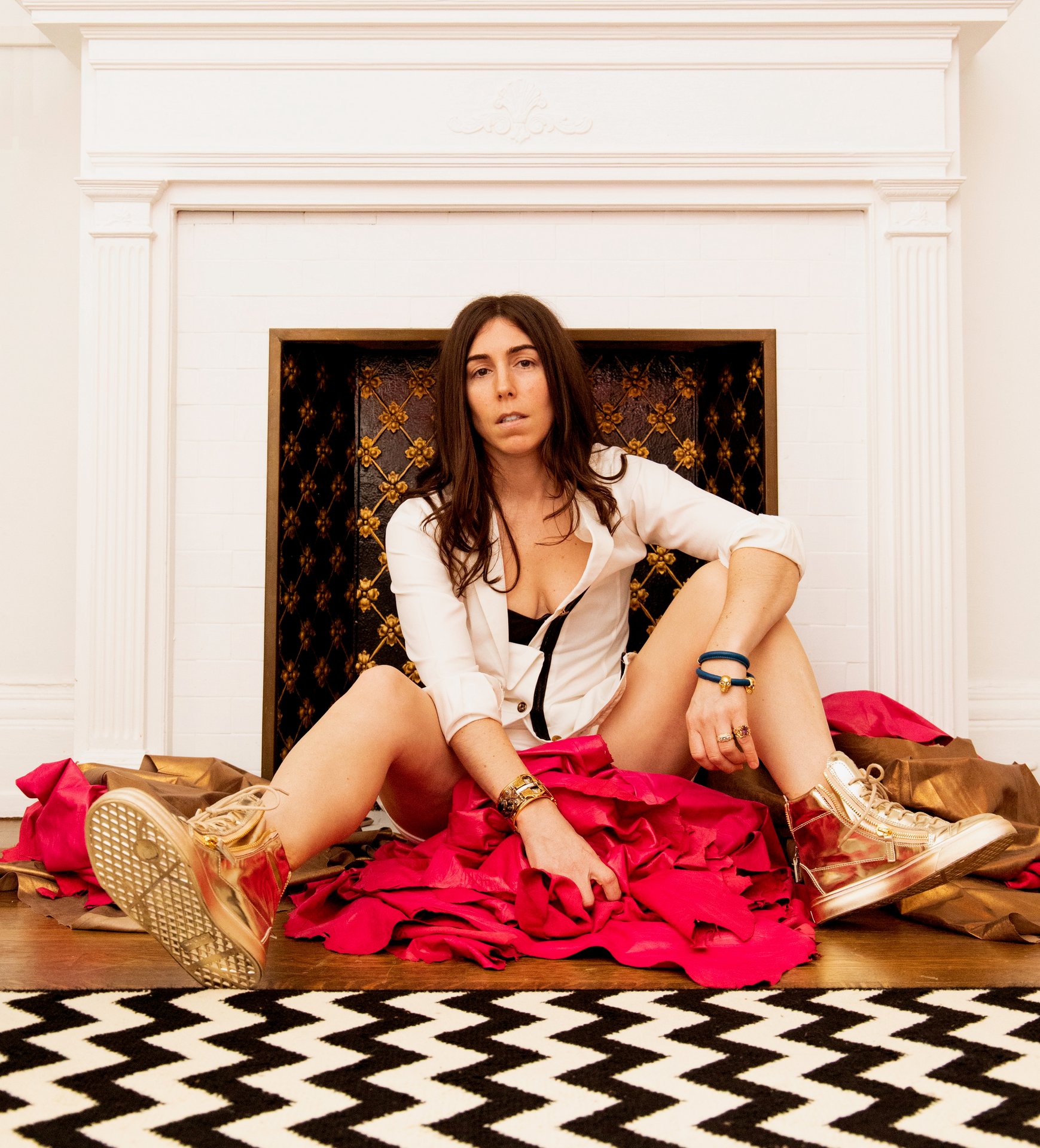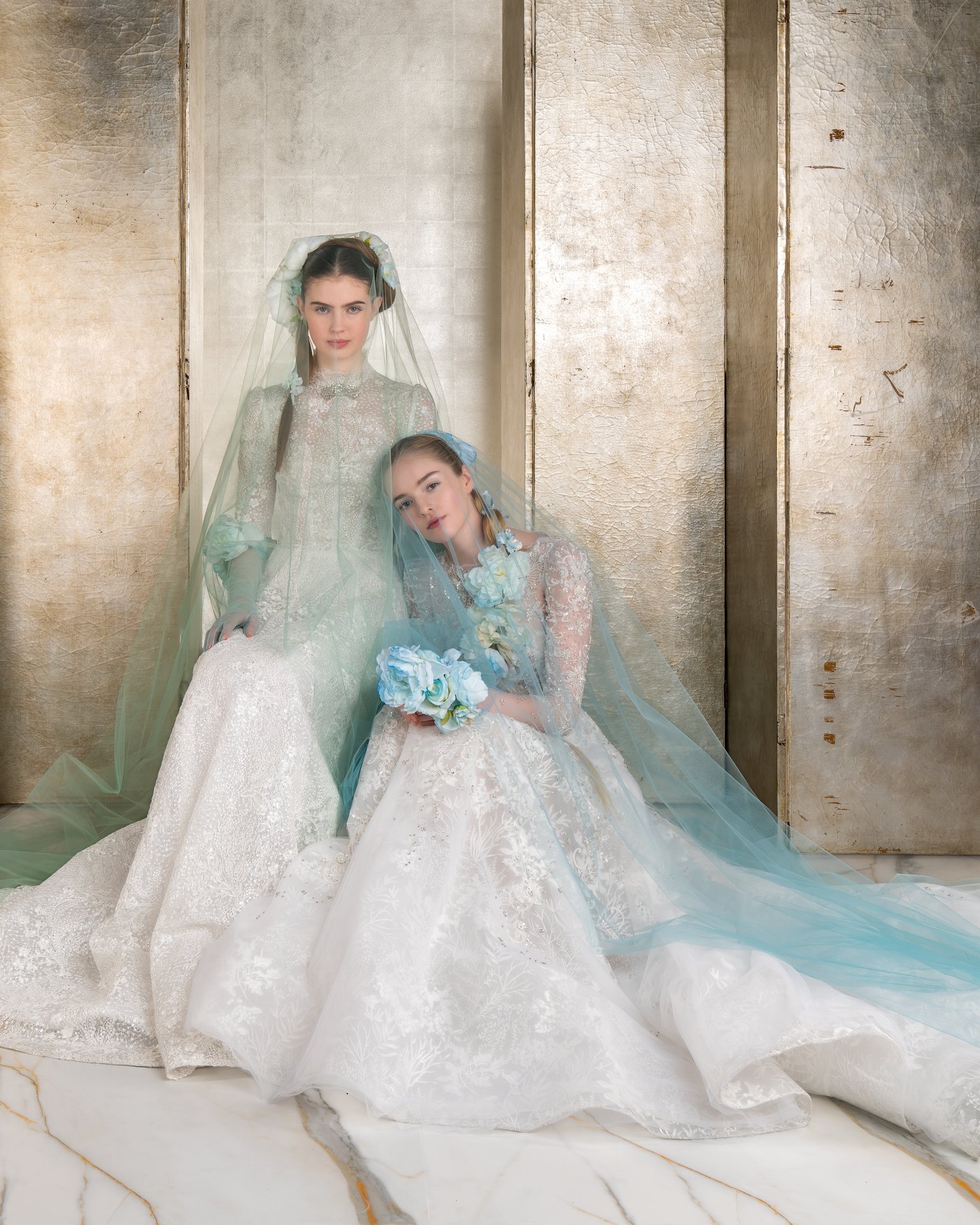Career Conversations: Reginald Christian on His Passage to Saks
April 18, 2023
Rashad Benton



Reginald Christian (Photo by Dan Li @danliphotography)
Reginald Christian, the Southern Gentleman from just outside the limits of Lynchburg, Virginia, originally moved to New York City 13 years ago to study at Berkeley College and pursue a career in Child Psychology. Relocation was challenging for the family-oriented cook, but his decision to come out to his family and the thought of living freely in Virginia didn’t quite mix. The silent painter with an aisle in his apartment needed a safe space to develop and explore, which he found in the city. Reginald, who goes by Reggie, is the son of a dietitian, but his desire to follow in his family’s academic footsteps was thwarted by an apprenticeship at an NYC Charter School in Brooklyn; he had a different idea of what it would be like to spend the day with children.
His friend Sophie suggested that he intern at Teen Vogue rather than pursue a career in child psychology because she didn’t think it was a good fit; it turns out she was right. Reggie initially thought of a career in fashion as simply being a designer or model. However, after several internships, including one at Teen Vogue, freelance jobs, and coveted roles at two menswear dynasties, Christian is now the Men’s Fashion Market Manager at Saks Fifth Avenue overseeing men’s fashion.
Today, he tells the CFDA more about his story.
After taking the eight-hour AMTRAK train ride to New York City, did you ever consider what your life would be like, or were you just living in the moment?
I was living in the moment. Since I was there for school, I knew what the next three years should or would look like. I admit that I did not have a proper plan for getting from point A to point B because there was no marriage at this age or at this checkpoint. I was open to what the city would offer me. I was still discovering who I wanted to be, how I wanted to dress and present, and the environment I wanted to hang around.
What were you aiming for before you found your way?
The goal was to become a fashion editor. This occurred after I had a complete comprehension of the responsibilities of that position and the role itself. I started to train my eye to see fashion through the lens of an editor once I realized that and found the motivation to pursue this career. I was paying close attention to what top editors such as Shiona Turini were doing.
So, you were studying at Berkeley College while interning; how do you feel your internships helped you land your firsy role at GQ?
I worked as an intern for three years, which was instrumental in helping me establish industry relationships. Teen Vogue was my first internship, which was supposed to last six months but ended up lasting a year. I moved on to a PR internship at Ralph Lauren from there. After Ralph, I interned at Vogue Italia and then freelanced with Patti Wilson.
While doing a showroom pull for Patti Wilson, I ran into a market director from GQ. He recognized me from when I was an intern at Teen Vogue (when GQ and Teen Vogue shared the same floors at 4 Times Sq.); they asked about what I had been up to and if I would be interested in interviewing at GQ and from there things took off.
I like to think that liking clothing made for men differs from being interested in menswear. What do you make of this as someone with expertise in the field?
You can become passionate or dive as deep into fashion as your heart desires. That makes you hyper-focused on menswear’s nuances, which can be very exciting. On the other hand, another guy could mainly focus on the overall aesthetic: “Do I look good, am I dressed well?” Interestingly enough, I teeter that line. I wasn’t raised in a family that spoke about designer brands; there wasn’t a big emphasis on fashion, but from my grandparents’ down the line to my cousins, it was an expectation to dress well and understand how to dress appropriately for different occasions.
Can you recall a time when you felt like giving up?
I’ve felt that throughout my process in New York City. There are various reasons, but I’ve felt like I’ve always been pushed to the breaking point of “alright, there’s another city, and home is always available.” During my second go-round at GQ, I was impacted by layoffs. From there, I started freelancing in the city; whether it was picking up jobs in styling or writing, I was out working my resume to sustain myself, and I remember saying, “This is crazy, you’ve been through these internships and all of this, and now you’re out here struggling to stay here.” It was stressful, and I asked myself, “Is it worth it? What are you continuing to reach out or interview for if it isn’t happening?” I was at my wit’s end, saying to myself I cannot sit on the phone and argue with someone for my check that’s 90 days late, and that’s when Mr. Porter called me.
Okay, let’s go back to GQ Magazine because you were employed there twice, first as a Fashion Assistant and then as a Digital Market Associate. What did both moments signal for you?
Working at one of the top menswear fashion publications and having my style and work ethic recognized by industry leaders such as Jim Moore, and Madeline Weeks assured me that I wasn’t walking in the wrong direction the entire time. Candidly it was essential for me as I continue to build upon my confidence and understand my contribution to this mammoth fashion conversation.
GQ was the first, followed by Italian Vogue and then Mr. Porter. There is obviously a path, but this move to Mr. Porter brought you into the retail sector. It’s almost like fantasy versus reality; discuss your observed differences.
When I first transferred from editorial to retail, I didn’t see or recognize the differences so starkly as it relates to my day-to-day. I worked as a styling editor for Mr. Porter, where my responsibilities included understanding the brand’s DNA, creating mood and trend boards, and styling on set. It was quite in line with what I had learned at GQ and Italian Vogue because the skillsets I had developed at the magazines were transferable.
During my MP days, I wasn’t super focused on the shift between the two companies because I was tasked with bringing that editorial flair and point-of-view into styling at Mr. Porter, which is one of the reasons they hired me. It wasn’t until I was on set at Mr. Porter observing how fast the cycles moved, the amount of looks we were styling, and the number of brands we were processing that I took notice. In editorial it’s a much more curated and methodical experience that moves at somewhat of a slower pace.
Now that you are in this managerial position at one of our top luxury stores, I would like to hear from you about the advantages and challenges of the menswear market in a retail setting.
I think understanding the vastness of menswear fashion. Earlier, we spoke about the more nuanced guy but so many kinds of people shop and want to feel good in fashion, and at Saks, I’m constantly learning and understanding how our customers are continuously evolving. Figuring out how to translate the varying types of shoppers is exciting and allows me to accept an opportunity. It’s a 2-in-1, but for sure, a positive because you must be forward-thinking and look at each season as an opportunity to revisit or look at something new. If there is a challenge, it always keeps me busy. Having a sense of prioritization and time management is critical.
I understand that traveling is part of your job, but what exactly does a Men’s Fashion Market Manager do during the day?
If I’m in the market, which means going to runway shows and walk-throughs with new or existing brands, my days include going to city showrooms and meeting with buyers to help them choose the best items to buy to make sure they match our trend forecasts. I also provided feedback and guidance to our merchants but also brands. On any given week, I could have a day that consists of 10 appointments where I’m making decisions on key looks for advertising and marketing campaigns. My role also works cross-functionally, including working alongside the creative and content teams, which deal with copy and language. A considerable part of my role is scouting new brands, which I genuinely enjoy. I also work with our existing partners to update them on the status of how they’re performing from a fashion POV.
What have you brought to this role and Saks at Large?
An editorial perspective. I understand that I bring a broader perspective on the state of fashion and frequently romanticize it. The enjoyment of being a team player is another attribute I’ve brought to the company; I enjoy being able to solicit feedback from my coworker. This is probably a problem, but I intensely crave newness. I’m always thinking or looking for something new, and I believe that is something Saks values.
I want to end this by discussing your planned journey vs. the one you’ve had. Are you where you envisioned yourself to be ten years ago, or did you find yourself off the beaten path?
I envisioned that I would be working in fashion. My work at Saks aligns with the aspects of the industry that have always resonated with me and I am fortunate to be in this particular role where I’m able to address fashion and style from various perspectives while constantly pushing to drive fashion forward. It’s how I felt I wanted to operate in this industry, discovering and supporting emerging brands, supporting, and driving large initiatives, and translating fashion to a broad audience. It doesn’t mean everything is perfect, but I always welcome a healthy challenge.
IG (Personal): @reginald_christian

